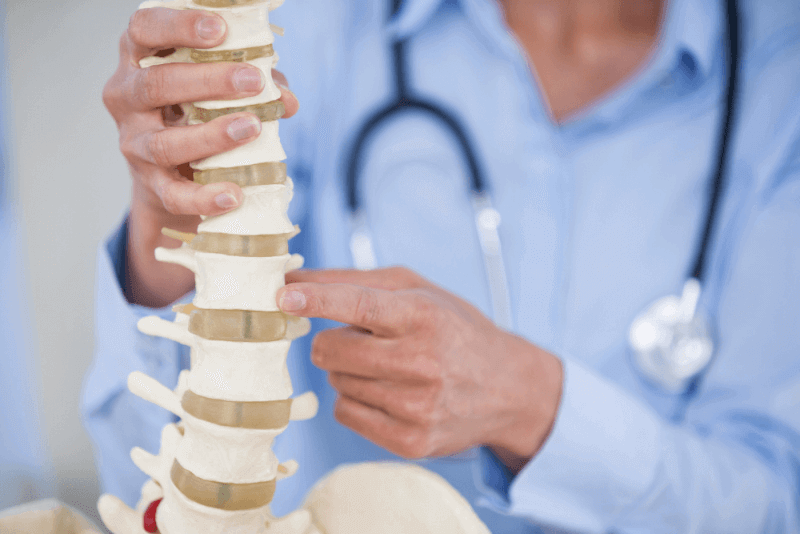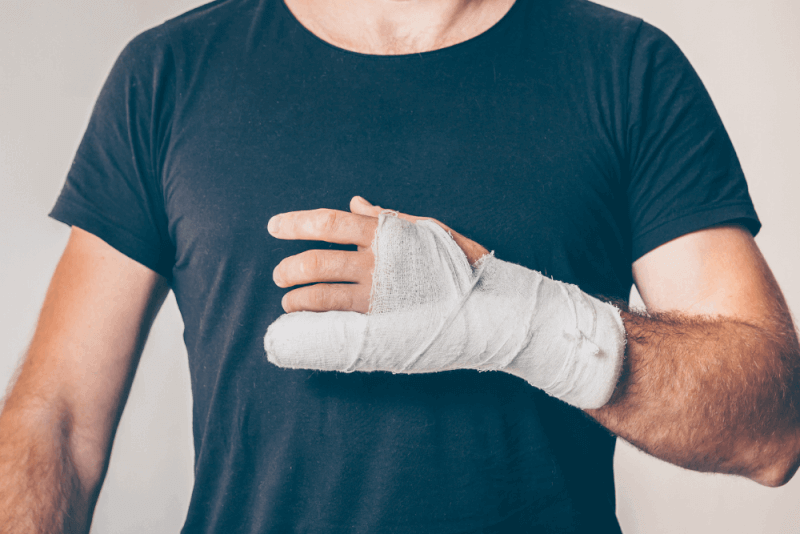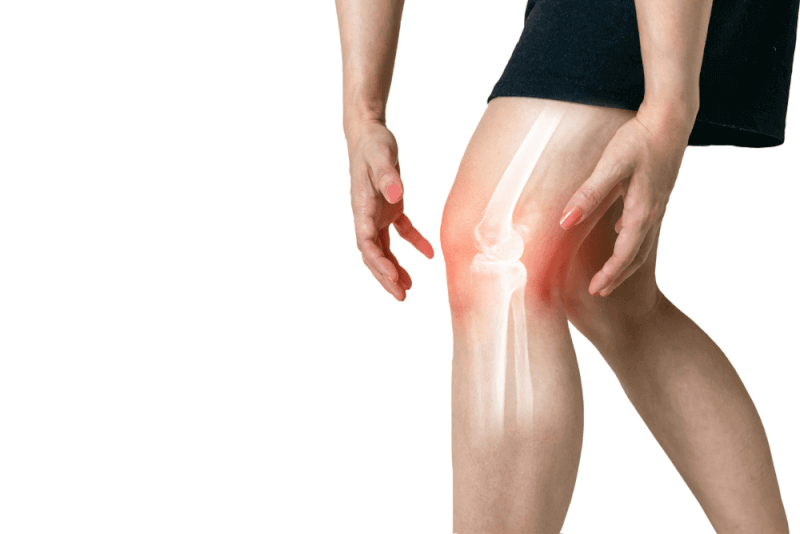Heel spurs, which usually start in front of the heel and then spread to other parts of the foot, are called osteophytes in the medical literature. Heel spurs, which are 0.5 centimeters in size, are not always visible from the outside. Heel spurs, which usually appear as soon as you get up in the morning or when you get up from your seat, can cause problems such as patients not being able to step on their feet.
What is a Heel Spur?
Pointed bone growths that develop on the heel bone are called heel spurs. Also called calcaneus, they are structures formed due to calcium deposits under the heel bone. These structures, which can be visualized by X-ray, can usually be seen protruding one to one and a half centimeters from the heel. If they are not visible on X-rays, they are called heel spur syndrome.
Health problems that cause heel spurs can occur independently as well as independently. On the front part of the heel can be seen just below or behind the arch of the foot. Heel spurs at the back of the school are usually related to inflammation of the Achilles tendon. Inflammation of the Achilles tendon is called Achilles tendonitis and heel pain occurs when pressure is applied to the front part. Heel spurs on the front of the heel are usually associated with plantar fasciitis. Plantar fasciitis is an inflammation of the connective tissues called plantar fascia, which runs under the foot and connects the heel and toes.
What Causes Heel Spurs?
Heel spurs are caused by calcium deposits under the heel bone. Calcium deposits are caused by local inflammation in the muscles, soft tissue tendons or plantar fascia as a result of chronic stretching and constant tearing.
Factors Increasing the Risk of Heel Spurs
- Being overweight,
- Wearing shoes that are not suitable for the anatomy of the foot,
- Wearing shoes that do not support the arch of the foot,
- Brisk walking or jogging on hard surfaces,
- Gait abnormalities that place excessive stress on the heel bone, heel or ligaments,
Other Risk Factors Associated with Plantar Fasciitis
The elasticity of the plantar fascia decreases with advancing age. This leads to thinning of the cushion tissue that protects the heel. These changes lead to an increased risk of heel spurs.
Another factor that causes heel spurs, which are more common in women, is damage to the soft tissue due to blows or sprains to the heel.
People who spend a significant part of the day on their feet are also more at risk of heel spurs, and heel spurs are also common in diabetics.
It is more common in people with a high arch of the foot or flat feet, as well as in people who are constantly engaged in short-term physical activities.
Diseases among the medical conditions that increase the risk of heel spurs are as follows:
- Achilles tendonitis
- Plantar fasciitis
- Diffuse idiopathic skeletal hyperostosis,
- Ankylosing spondylitis
- Reactive arthritis,
What are the Symptoms of Heel Spurs?
Heel spurs are one of the health problems that usually do not give symptoms. Some patients have chronic pain that is intermittent or chronic. These pains are caused by inflammation, especially at the point of the heel spur. If the pain occurs especially when walking or running, it is not caused by the heel spur, but by inflammation around the heel spur.
The pain experienced due to heel spurs is usually expressed as a pinprick or stabbing pain and occurs when you first get out of bed in the morning or when you first stand up after prolonged sitting. Symptoms of heel spurs also include the following.
- Sensitivity in the heel when walking barefoot,
- The formation of a small and visible protrusion under the heel,
- Increased heat around the affected area,
- Swelling or inflammation in front of the heel,
How is Heel Spur Diagnosed?
The only way to be sure of the presence of a heel spur is to take an X-ray. The diagnosis of heel spur is also made when the bone spur is seen on X-ray. heel spurs, which usually give no symptoms, are diagnosed as a result of X-rays taken for other reasons.
Heel Spur Treatment
The main purpose of heel spur treatment is to reduce the pressure on the foot. In addition, reducing the pain felt by patients and treating inflammation, if any, are also among the goals of treatment.
Rest
The rest given to patients reduces the pressure on the heel spur, relieving swelling in the affected area and reducing infection.
Ice Application
Ice application of the patients helps to reduce the swelling and pain in the area where the heel spur is located.
Orthosis Use
The orthosis, which is a ring-shaped apparatus used inside the shoe, is used to reduce the pressure on the heel.
Wearing Shock Absorbing Sneakers
It relieves the pressure applied to the soft tissue in the foot during sports and reduces pain.
Anti-inflammatory Drugs
It is used to suppress the inflammation that causes heel spurs.
Extracorporeal Shock Wave Therapy (ESWT)
High-energy sound waves are directed to the affected area to heal the damage to the plantar fascia. Sound waves promote healing.
Prolotherapy
An irritant such as dextrose is injected into the damaged soft tissue. This agent allows the tissue to be accelerated./p>
PRP
A natural substance obtained from the patients’ own blood is injected into the heel area to accelerate healing.
Acupuncture
Sterile needles inserted into some parts of the body activate the body’s healing mechanism, allowing the damaged area to heal.
Steroid Injections
It is used to reduce pain and swelling in the heel spur area. It is used when anti-inflammatory drugs are not sufficient in treatment.
Surgery
Heel spurs are rarely treated surgically. Surgery is resorted to if the patients’ complaints persist for 9 to 12 months without any results. These operations involve releasing the plantar fascia or removing the heel spur.
Heel Spur Exercises
One of the reasons for the formation of heel spurs is that the muscles in the foot and calf are constantly exposed to contraction due to their short length. For this reason, exercises that will help the soft tissues in the region to lengthen and stretch help to reduce complaints.
Other Methods Used in Heel Spur Treatment
Epsom salt can be used to help treat heel spurs. Epsom salt containing magnesium sulfate is one of the natural cures for heel spurs. For this, it is sufficient to soak the foot in water with epsom salt added.
Foot massages with lavender or rosemary oil help to reduce pain due to their anti-inflammatory properties.
Apple cider vinegar, which is known to remove excess calcium from the bones, is another helpful treatment method used in heel spurs. For the application of apple cider vinegar, the foot is kept in water with apple cider vinegar added or the towel soaked with apple cider vinegar is kept on the heel spur.
Finally, baking soda can also be used to treat heel spurs. To do this, mix half a part baking soda with one part water to obtain a paste. This paste is applied to the area where the heel spur is with massage.












